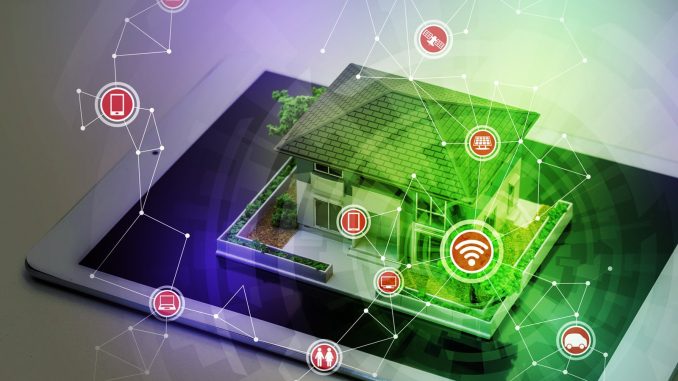
The home, a sanctuary and often the largest asset for most individuals, has long been protected by traditional insurance policies designed to respond after a loss occurs. However, with the proliferation of smart devices, our homes are becoming increasingly intelligent, capable of not just reacting to events but proactively preventing them. This technological evolution is fundamentally reshaping the home insurance landscape, transforming it from a purely reactive model into one that emphasizes risk mitigation, personalized pricing, and enhanced customer engagement. The integration of smart home technology is ushering in an era where insurance is not just about recovery, but also about prevention and continuous protection.
At its core, smart home technology encompasses a range of interconnected devices that can monitor, control, and automate various aspects of a household. This includes smart security systems with video doorbells and motion sensors, smart smoke and carbon monoxide detectors, water leak sensors, smart thermostats, and even smart appliances. The data generated by these devices provides unprecedented insights into the operational health and risk profile of a home. For insurers, this real-time, granular data is a goldmine, allowing them to move beyond broad statistical averages and assess individual property risks with far greater precision.
One of the most significant impacts of smart devices on home insurance is in **risk reduction and prevention**. Water damage, for instance, remains one of the most common and costly claims for home insurers globally. A burst pipe or an unnoticed leak can quickly lead to extensive damage, mold growth, and expensive repairs. Smart water leak detectors, strategically placed near appliances like washing machines, water heaters, or under sinks, can identify leaks at their earliest stages, sending immediate alerts to the homeowner’s smartphone. Some advanced systems can even automatically shut off the main water supply to prevent catastrophic damage. By enabling such swift intervention, these devices can significantly reduce the severity, and sometimes even prevent the occurrence, of costly water damage claims. This proactive approach directly benefits insurers by reducing payouts and homeowners by minimizing disruption and out-of-pocket expenses.
Similarly, **enhanced security systems** are transforming how insurers view burglary and theft risks. Smart security systems, including video doorbells, motion sensors, and automated locks, deter potential intruders and provide real-time alerts. If a homeowner in a busy city like Bangkok receives a notification of suspicious activity while they are away, they can immediately check live camera feeds, speak to visitors via the doorbell, or even alert authorities. This increased surveillance and rapid response capability significantly reduces the likelihood of successful break-ins and minimizes theft-related losses. Many insurers are now offering substantial discounts on premiums for homes equipped with these modern security solutions, especially those that are professionally monitored 24/7.
**Fire safety** is another critical area benefiting from smart device integration. Smart smoke and carbon monoxide detectors go beyond traditional alarms by sending instant alerts to homeowners’ phones, even when they are not home. Some can even integrate with smart home hubs to trigger other actions, such as shutting down HVAC systems to prevent smoke from spreading, or automatically contacting emergency services. Early detection is paramount in mitigating fire damage, and these intelligent alarms offer a crucial advantage in preventing small incidents from escalating into catastrophic losses.
The data collected by smart devices also plays a pivotal role in **more accurate underwriting and personalized pricing**. Insurers can now offer “usage-based” or “behavioral” home insurance models, where premiums are dynamically adjusted based on the actual safety and maintenance practices within a home. A homeowner who consistently keeps their smart security system armed, responds promptly to leak alerts, and maintains optimal temperatures through a smart thermostat might be deemed a lower risk, thereby qualifying for more favorable rates. This shift moves away from a one-size-fits-all approach to insurance, rewarding homeowners for proactive risk management.
Furthermore, in the unfortunate event of a claim, smart home data can significantly **streamline the claims process**. Footage from security cameras, timestamps from leak detectors, or data logs from smart thermostats can provide invaluable evidence to insurers, helping to verify the incident, assess the extent of the damage more accurately, and expedite payouts. This objective data can reduce the need for extensive on-site investigations, minimize disputes, and enhance transparency for all parties involved.
However, the widespread adoption of smart devices in home insurance is not without its challenges. **Data privacy and security** are paramount concerns. Homeowners must be assured that their personal data collected by these devices is secure, used only for intended purposes, and not vulnerable to cyberattacks. Insurers must implement robust cybersecurity measures and adhere to stringent data protection regulations. Another hurdle is **interoperability**; with a multitude of smart device manufacturers, ensuring seamless integration between different devices and the insurer’s platforms can be complex. There’s also the question of **algorithmic bias** if data-driven underwriting models inadvertently penalize certain groups based on factors beyond their control. Finally, insurers need to educate consumers on the benefits and proper use of these devices, while also navigating the complexities of integrating these technologies into legacy systems.
Despite these challenges, the future of home insurance is undeniably intertwined with smart home technology. Insurers are actively forging partnerships with smart device manufacturers, offering subsidized devices or premium discounts to incentivize adoption. This collaborative ecosystem is driving innovation, shifting the focus from mere financial recovery to comprehensive risk prevention and continuous home protection. As smart devices become more ubiquitous and sophisticated, they will continue to empower homeowners to manage their risks more effectively, ultimately reshaping home insurance into a more proactive, personalized, and efficient safeguard for our most cherished assets.